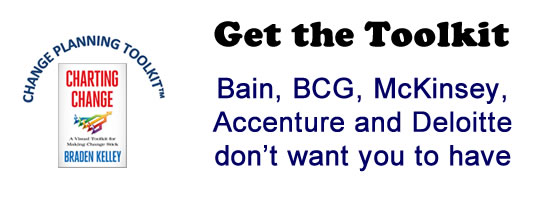One Genius Initiative That Ends the Generational Divide
Generation bashing is tearing organizations apart. Here’s a simple way to put an end to it.
Iconic CEO Jack Welch came up with a way to bridge the generation gap in 1999 and yet almost 20 years later 86% of companies still haven’t caught on.

In the late 1990’s GE’s iconic CEO, Jack Welch, did something unheard of. Welch was concerned that his older execs were losing touch with newer technologies on the horizon, such as the Internet and the World Wide Web, as well as the new behaviors of Gen X and the rising tide of what were then called digital natives, basically code at the time for anyone not old enough to drink.
What he did wasn’t popular with many of his execs. But Welch mandated it for 500 of GE’s leadership team. What was “it”? Every one of them had to be mentored by a much younger hire that understood the Gen X demographic and could help mentor the older exec on the Internet.
You can imagine how well that must have been received. But the move was brilliant. Not only did GE get a jump-start on the impact of the Internet but a huge generational chasm was bridged in the process. The mentors were exposed to seasoned professionals in a setting where both would learn.
Here we are, nearly 20 years later, and less than 14 percent of companies have a reverse mentoring program in place, and yet you’d be hard pressed to find a company that’s not struggling with the multi-generational issues of today’s workplace.
Reverse What, Who, Why?
So, why the lack of reverse mentoring? Well, first of all, I am amazed at how few people even have a clue that it exists. When I talk about it to corporate clients and audiences I see people’s eyes pop in astonishment at the idea. But there are other reasons.
Unlike traditional mentoring, in which the mentor is always a senior individual who can pass on experience without much risk of pushback from the protégé, reverse mentoring provides no safe haven for the mentor, who can easily be trumped by the protégé’s position in the organizational hierarchy. And, let’s face it, the more senior protégé doesn’t like being a protégé!
In fact, I was presenting the topic at one event my company, Delphi Group, runs on Managing Gen Z and a fellow came up to me and said, with frustration, “That just would never work at my company!” “Why,” I asked? His response sums up the challenge for most organizations, “Our culture simply wouldn’t allow it.”
Clearly there’s a fear factor on the part of older executives who are wary of being upstaged by younger hires, as well as fear on the part of the younger employees that they will not be taken seriously or that their advice might be interpreted as criticism of a more senior employee. Well, guess what? That’s exactly the why you need to do it if you want these generations working together!
I’ve seen reverse mentoring in action creating amazingly cohesive, tolerant, creative, and innovative organizations. If you don’t have some sort of reverse mentoring program in place you really need to ask what’s stopping you.
It doesn’t have to be that hard. To help you start a reverse mentoring program here’s a very short I’ve often used in working with companies who are exploring the option of reverse mentoring. (You can find a much more elaborate description the book I co-authored with Dan Keldsen, The Gen Z Effect)
What is reverse mentoring?
Reverse mentoring is a learning relationship between a a younger mentor and an older protégé, which is intended to bridge generational gaps through a shared understanding of technology and social behaviors.
Why reverse mentoring?
Mentoring relationships can be among the most valuable and meaningful professional and life relationships. The premise is simple: allow experienced mentors to pass on their know-how, successes, failures, and confidence to less experienced individuals. This is precisely the premise behind reverse mentoring, except that the reverse mentor is a younger individual who has less life experience but more direct experience with new technologies and behaviors. The reverse mentor is skilled in both cutting-edge technologies and, more importantly, the social behaviors and attitudes that these technologies create.
Who uses reverse mentoring?
While only 14 percent of companies have a reverse mentoring program in place, there are some fairly prominent players among them, including GE, The Hartford, Ogilvy & Mather, HP, Target, United Health, PwC, Procter & Gamble, Deloitte, and Cisco.
Why is reverse mentoring valuable?
While it is simple to describe and understand, reverse mentoring is rare. If you ask most people to identify a reverse mentor they are likely to come up with a child or grandchild, niece or nephew. Few of us have had reverse mentors on the job.
One of the greatest intangible values of a reverse mentoring relationship is the confidence it often conveys to both individuals. The protégé benefits from the cutting-edge perspective of the mentor and the mentor benefits from the exposure and recognition gained in working with a more senior individual.
Although reverse mentoring may be intended primarily to expose senior employees to new technologies, behaviors, and ideas, it also provides younger employees with the reassurance that they have valuable insights and points of view that are worth sharing.
What can a reverse mentor expect to contribute in terms of time and energy?
This will vary based on the needs of the situation. Typically, a mentor should expect to spend regular one- to two-hours sessions with the protégé in order to allow a relationship to develop. This may mean monthly or twice-monthly sessions initially. What is essential is a negotiation of the mentor’s availability and the protégé’s needs at the outset and on an ongoing basis.
How long will a reverse-mentoring relationship last?
Although traditional mentoring relationships can last for decades–sometimes even a lifetime–the ideal reverse mentoring relationship is usually more focused on a shorter period of intense learning. Reverse mentoring focuses on a specific set of experiences rather than the transfer of lifelong learning. However, there are cases where reverse mentoring relationships continue for long periods of time. It’s up to the individuals involved and depends upon the specifics of their organization’s commitment to and support of the time investment involved.
How do mentors and mentees find each other?
Traditional mentoring is often an organic process in which mentor and protégé connect through a mutual contact or affiliation. However, reverse mentoring relationships start when a protégé reaches out to a mentor for some initial advice or guidance. Given that this is most often done in an organizational context, support has to be available for the mentor to dedicate the time required to build a worthwhile relationship. Often, companies put in place formal reverse mentoring programs, such as the one pioneered by Jack Welch.
Who makes the best reverse mentor?
While there are many subtleties that have to do with the chemistry between mentor and protégé, there are some fundamentals that qualify good mentors. Among these are:
- A willingness to contribute time and energy for the satisfaction of seeing somebody else’s growth and success
- Deep experience in success and failure with new technologies and attitudes that they are willing to share in an unembellished way with the protégé–the good, the bad, and the ugly!
- A sincere interest in developing connected communities that cross age groups and the sharing of knowledge among the community, regardless of members’ age
- An ability, interest, and organizational support to take time out of their schedule to invest in mentoring
- A positive experience of having been mentored (traditionally or reverse) and thereby understanding its value
This short guide is just the beginning. In order to effectively use reverse mentoring you need to make it a discipline, which is supported by leadership and culture. The good news is that if you have a mentoring program in place then you’re already halfway there.
But even if you don’t, it’s worth seriously considering the value of putting in place a reverse mentoring program to bridge the generational boundaries that undermine your teams and limit your organization’s capacity to innovate.
This article was originally published on Inc.
Wait! Before you go…
Choose how you want the latest innovation content delivered to you:
- Daily — RSS Feed — Email — Twitter — Facebook — Linkedin Today
- Weekly — Email Newsletter — Free Magazine — Linkedin Group
 Tom Koulopoulos is the author of 10 books and founder of the Delphi Group, a 25-year-old Boston-based think tank and a past Inc. 500 company that focuses on innovation and the future of business. He tweets from @tkspeaks.
Tom Koulopoulos is the author of 10 books and founder of the Delphi Group, a 25-year-old Boston-based think tank and a past Inc. 500 company that focuses on innovation and the future of business. He tweets from @tkspeaks.
NEVER MISS ANOTHER NEWSLETTER!
LATEST BLOGS
How Brexit Has Affected UK E-commerce Businesses
Photo by Zyro on Unsplash The popularity of online shopping was already growing at an impressive rate – and…
Read MoreOvercoming range anxiety: three tips for EV owners
Photo by Jenny Ueberberg on Unsplash In the last few years, electric vehicles (EVs) have become more and more…
Read More


